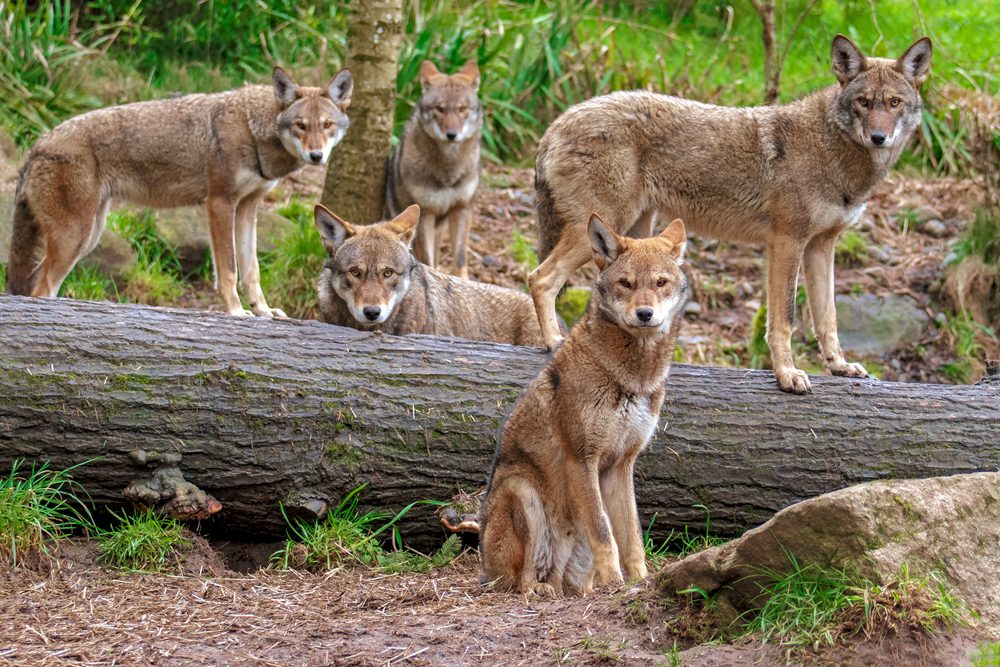
The Importance of Wolf Reintroduction: Rebuilding Ecosystems and Preserving Nature's Balance
As an avid conservationist and wildlife enthusiast, I cannot stress enough the significance of apex predators in maintaining a healthy and balanced ecosystem.
- Author:
- Jodi Richard
- Date:
- March 29 2024
As an avid conservationist and wildlife enthusiast, I cannot stress enough the significance of apex predators in maintaining a healthy and balanced ecosystem:
- Wolf reintroduction
- The importance of conservation efforts supporting wolves
- The dynamics of the Wolf family structure
- The effects of trophy hunting on Wolf packs
The Role of an Apex Predator, such as wolves, is crucial in the ecosystem. Acting as nature's regulators, wolves help control herbivore populations by preventing overgrazing and maintaining the ecosystem's natural balance. Wolves also help reduce disease spread among prey species by targeting weaker individuals. Their presence ensures a healthier and more diverse ecosystem.
Due to extermination practices, wolf populations have faced severe declines, leading to their local extinction in many regions. However, in recent years, a growing recognition of the importance of reintroducing these apex predators to areas they once roamed has ignited reintroduction programs across the western and southern United States. These reintroduction programs aim to restore the natural balance and reverse the negative impacts caused by their absence.
Wolf reintroduction benefits not only the wolves themselves but also the preservation of entire ecosystems. By reintroducing wolves, we can help regulate prey populations, reduce overgrazing, and restore damaged habitats. This, in turn, benefits a wide range of plant and animal species that depend on a healthy ecosystem for their survival. Reintroducing wolves can trigger a cascade of positive effects throughout the food web. For instance, their presence can lead to a redistribution in the population of large herbivores, allowing vegetation to regenerate. This small change attracts smaller herbivores, benefiting predators like lynx and foxes. By reintroducing wolves, we are essentially restoring the delicate web of life.
Wolves are highly social animals that live in family units called packs. A breeding male and female, the parents of the other pack members, lead these packs. The family structure of wolves is a complex system that ensures the survival and success of the pack. By understanding these dynamics, we can gain insight into how wolves contribute to their ecosystems' overall health and stability. Packs range from small families of the breeding pair and their offspring to extended families that include aunts, uncles, grandparents, and step-siblings. Wolves are one of the few species where other members of the pack help care for the offspring. This type of rearing is called alloparenting, which helps the pack remain cohesive and trains the offspring in many facets of pack life.
Trophy hunting, the practice of killing animals for recreation or sport, has been a contentious issue in the context of wolf reintroduction. While some argue that trophy hunting can provide financial incentives for conservation efforts, others believe it threatens the long-term viability of wolf populations. Proponents say that regulated hunting can help manage population sizes and reduce conflicts with humans, while opponents emphasize the importance of protecting apex predators and their integral role in ecosystems. The delisting of wolves from the Endangered Species Act has made trophy hunting possible and has sparked debates among conservationists. While some argue that their numbers have recovered sufficiently, others worry about the potential consequences. Striking a balance between conservation efforts and human interactions is vital to ensuring their long-term survival.
Trophy-hunting wolves disrupt the pack dynamic, causing family groups to break up. In many cases, these broken packs will shift to easier prey, such as local livestock, causing predation that would not have happened if the packs were left alone. There is no scientific evidence supporting hunting wolves. Leaving the packs alone is the best solution for wolves and livestock alike.
Across the globe, there have been several successful wolf reintroduction programs. One notable example is the reintroduction of gray wolves into Yellowstone National Park in the United States in 1995. The presence of wolves resulted in a disbursement in the elk population, allowing vegetation to recover and attracting other species, such as beavers and songbirds. Other states followed, the Mexican Gray Wolves in the Southwest and Gray Wolves in the Rockies, West, and Midwest regions. There is also research going on in the Northeast US. These success stories testify to the positive impact of wolf reintroduction on ecosystem restoration.
The reintroduction of wolves is a vital step towards restoring and preserving the delicate balance of our ecosystems. By recognizing the importance of apex predators like wolves, we can work towards creating sustainable environments that benefit both wildlife and humans alike. Let us continue to support conservation efforts and embrace the return of these magnificent creatures, for they are the guardians of our natural world.
Are you ready to take the journey?
Take the journey and find your nature guide.


